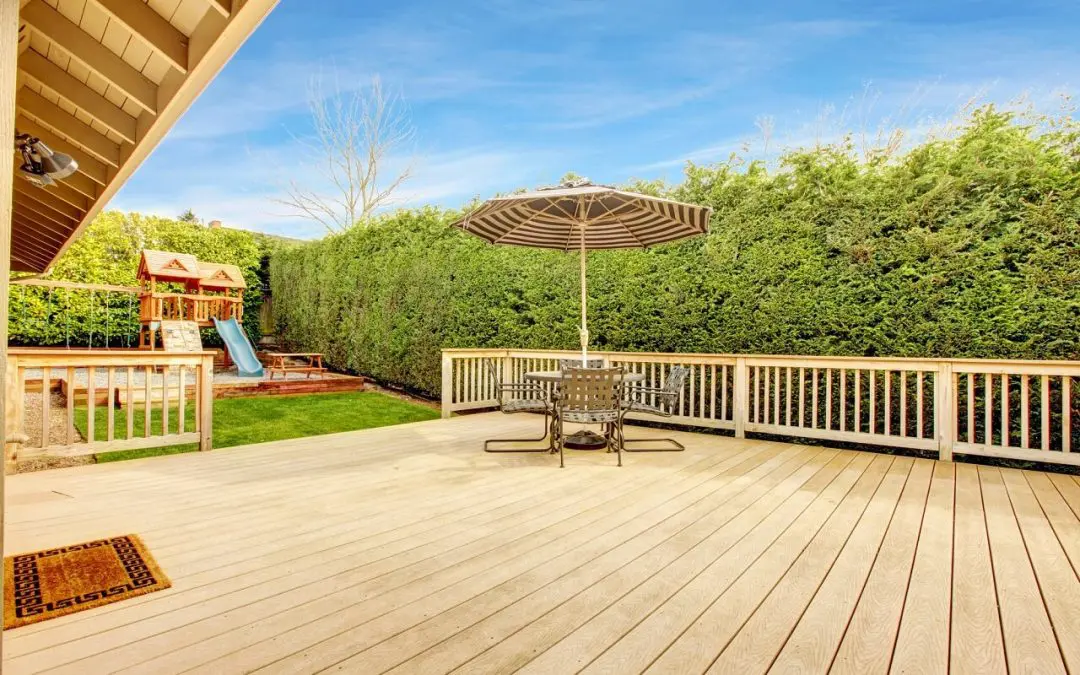Choosing the right decking material for your outdoor space is essential, as it can greatly impact your deck’s aesthetics, durability, and maintenance requirements. With numerous options available, deciding which material suits your needs can be challenging. Let’s look at the pros and cons of some of the most popular decking materials to help you make an informed decision.
Wooden Decking Materials
Wood is a popular choice due to its natural beauty and affordability. However, it requires regular maintenance to prevent rot, warping, and splintering. Wooden decking materials offer a natural and classic look that many homeowners find appealing. Several types of wood are commonly used for decking, each with its own characteristics.
- Pressure-treated lumber is a popular choice due to its affordability and durability. It is chemically treated to resist rot, insects, and decay.
- Cedar decking boasts natural resistance to rot and insects, making it a great option for those seeking a more natural and aromatic choice.
- Redwood is another popular option known for its beautiful color and natural resistance to decay.
Overall, wooden decking materials provide a timeless charm and can be customized through staining or painting to suit different design preferences.
Composite
Composite decking is a blend of wood fibers and plastic. It offers a low-maintenance option resistant to rot, insects, and fading. You can order composite decking in a wide range of colors and styles to match your home’s aesthetic. However, composites can be more expensive than wood and may require the support of a wooden frame.
Decking Materials: PVC
PVC decking is made entirely from plastic, highly durable, and resistant to moisture, rot, and insects. It requires minimal maintenance and offers a variety of colors and styles. However, PVC decking is generally more expensive than other materials and can be prone to fading and staining.
Aluminum
Aluminum decking is a durable, low-maintenance option resistant to moisture, fire, insects, and rot. Aluminum is strong but tends to be expensive and can become hot to the touch in direct sunlight. Many homeowners don’t enjoy the more industrial look of aluminum decking.
Concrete Decking
Concrete decking offers durability, low maintenance, and moisture, fire, rot, and insect resistance. It won’t splinter or warp and is non-slip, making it appropriate for areas near water. However, concrete has limited color options and requires substantial support due to its weight.
Selecting the right decking material depends on your needs, budget, and maintenance preferences. Wood offers affordability but requires regular upkeep, while composite and PVC provide low-maintenance options at a potentially higher cost. Aluminum and concrete deliver durability and minimal maintenance but may be pricier upfront. Consider these factors carefully to choose the ideal decking material for your property.
Robertson Home Inspection provides inspection services in the Piedmont Triad area of North Carolina. If you’re buying or selling a home, contact us to request an appointment.

